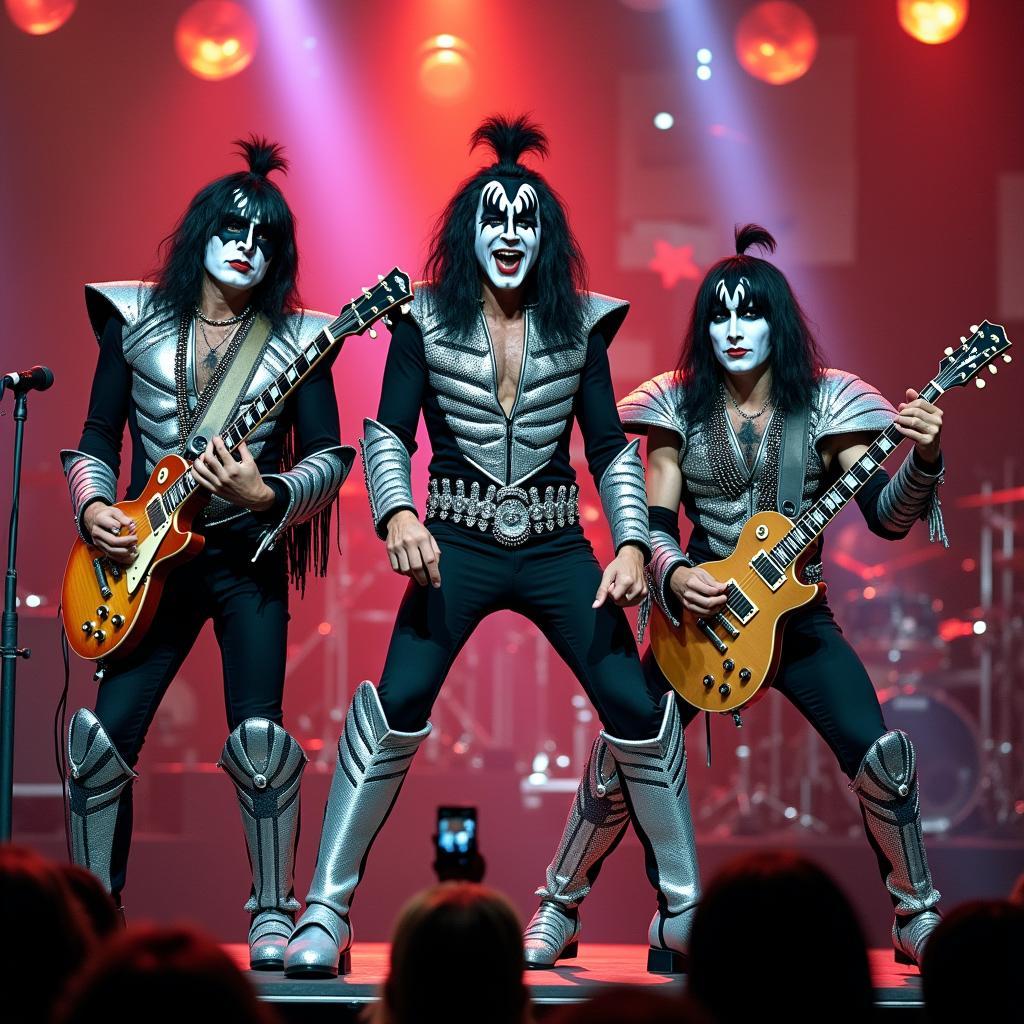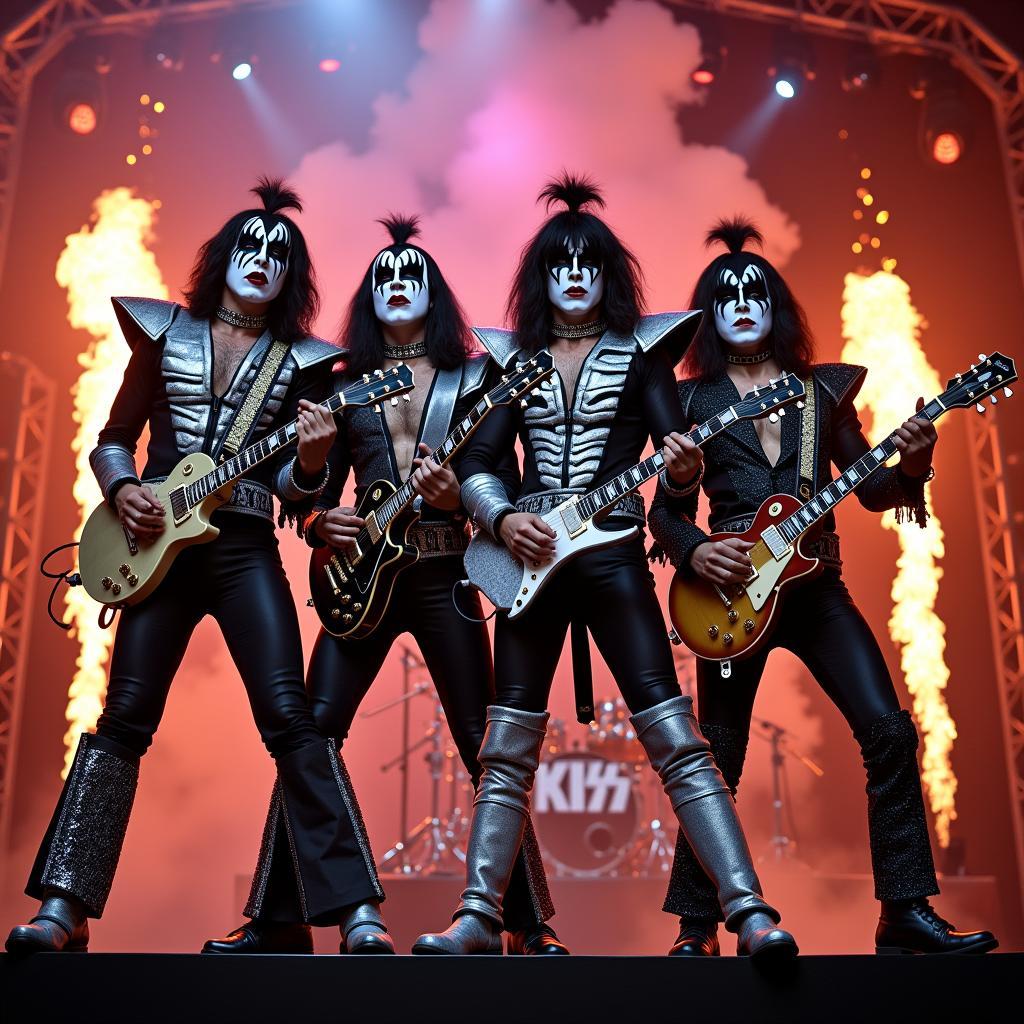The vibrant tapestry of the 1970s music scene was woven with threads of flamboyance, charisma, and unrestrained creativity. Among the dazzling performers that defined the era, one band emerged as a beacon of theatricality and rock ‘n’ roll rebellion: KISS. With their face paint, extravagant costumes, and larger-than-life personas, KISS didn’t just participate in the glam rock movement; they became its iconic ambassadors. But what was it about this band that solidified their role in the glam rock era, and how did they influence the genres that followed? Buckle up as we take a glittering ride through the history of KISS and their indelible mark on glam rock!
The Rise of Glam Rock
The glam rock movement emerged in the early 1970s, characterized by its bold aesthetics and a hybrid sound that fused rock with elements of pop, progressive rock, and even theater. Artists like David Bowie, T. Rex, and Roxy Music paved the way for a new kind of rock star—one who embraced gender fluidity, extravagant outfits, and a theatrical stage presence. The movement was about more than just music; it was a celebration of individuality and self-expression, making it a perfect playground for KISS to flourish.
KISS: The Birth of the Legends
Formed in New York City in 1973, KISS consisted of four dynamic individuals: Paul Stanley (The Starchild), Gene Simmons (The Demon), Ace Frehley (The Spaceman), and Peter Criss (The Catman). Each member adopted a unique persona that not only enhanced their stage performances but also contributed to their overarching narrative as a band. This commitment to character-driven artistry was a key element of glam rock, allowing KISS to stand out in a crowd of talented musicians.
Theatrical Performances and Iconic Aesthetics
What set KISS apart from their contemporaries was their ability to blend music with theatrical production. Their concerts were not just performances; they were immersive experiences. Dressed in black leather, platform boots, and adorned with dazzling face paint, KISS took the stage with pyrotechnics, smoke bombs, and elaborate stage sets. The visual spectacle of their live shows was as unforgettable as their anthemic rock sound, making them a vital part of the glam rock era.
Each character in KISS contributed to a collective identity that resonated with fans worldwide. The band’s commitment to their personas allowed them to craft a mythology that was both captivating and relatable. Gene Simmons’ Demon represented the darker side of rock ‘n’ roll, while Paul Stanley’s Starchild embodied hope and glamor. This ability to create compelling narratives through their music and performance art is something that many glam rock artists aspired to achieve.
Chart-Topping Hits and Cultural Impact
KISS’s musical prowess played a significant role in their rise to fame. Hits like “Rock and Roll All Nite,” “Detroit Rock City,” and “I Was Made for Lovin’ You” became anthems for a generation, embodying the spirit of rebellion and freedom that defined the glam rock era. Their infectious hooks and electrifying guitar riffs appealed not only to rock fans but also to the broader pop culture landscape.
The band’s influence extended beyond just their music. KISS became cultural icons, appearing in movies, television shows, and even comic books. Their groundbreaking marketing strategies, including merchandise like action figures and lunchboxes, set a precedent for how bands could capitalize on their brand. This savvy approach to merchandising was revolutionary and has since been emulated by countless artists across genres.
The Legacy of KISS in Rock History
As the glam rock movement began to wane in the late 1970s, KISS adapted to changing musical landscapes. They explored new styles, from disco-infused rock to heavy metal, proving their versatility as artists. However, their roots in glam rock remained an integral part of their identity. The band continued to perform for decades, captivating new generations of fans and influencing numerous artists across various genres.
Today, KISS is often credited with paving the way for future bands that embrace theatrical elements, including the likes of Marilyn Manson, Slipknot, and even pop icons like Lady Gaga. Their fusion of music, performance, and visual art created a template that continues to inspire artists striving for innovation in their craft.
Final Thoughts

KISS’s role in the glam rock era was not just about catchy tunes and outrageous costumes; it was about creating a cultural phenomenon that embraced freedom, individuality, and self-expression. The band’s theatricality and commitment to their personas helped to define what glam rock would ultimately become. As we look back at this dazzling time in music history, it’s clear that KISS did more than just rock; they transformed the landscape of popular culture, leaving a lasting legacy that continues to shine brightly to this day.

